Ringworm in Dogs: Identifying + Treating the Non-Parasitic Plague
Remember, this is an educational resource, not a guide for diagnosis.
Pictures are helpful, but they may not tell the whole dermatological story. We always recommend consulting with your vet for any of your dog's health concerns.
🎄 25% Off 🎄 Christmas Countdown Sale
Use code FELIZNAUGHTYDOG at checkout and get your dog, grand-dog, or your friend's dog the gift of relief!
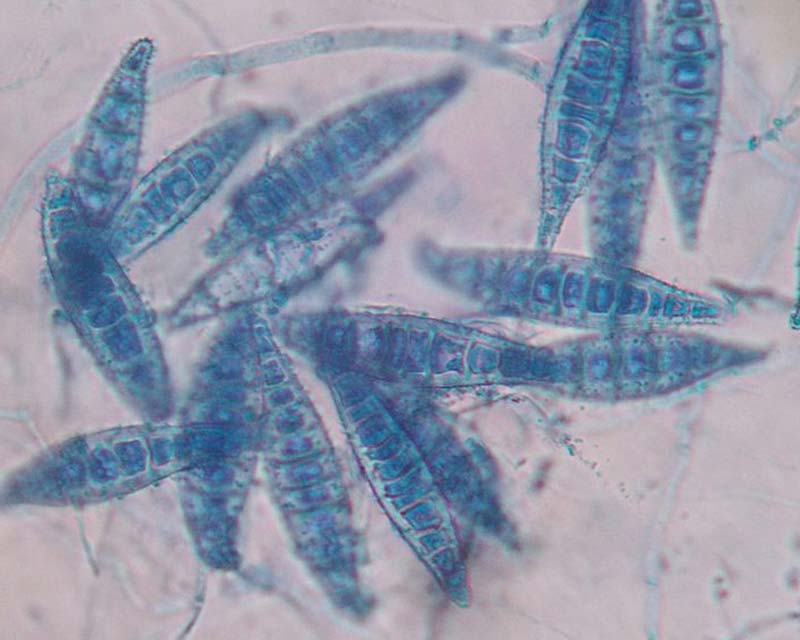
What Is Ringworm?
Contrary to what you might think, ringworm is not a parasite, but a fungus.
Ringworm, also called dermatophytosis, is a highly contagious skin disease caused by three types of fungus: Microsporum canis (about 70% of cases in dogs), Microsporum gypseum (about 20%), or Trichophyton metagrophytes (about 10%). It received its common name due to the round ring shape of the lesions and the worm-like appearance of the fungal cells.
Dermatophytosis is spread by contact, quickly attaching to hair, skin, or nails and feeding on hair follicles and dead skin cells. Signs of infection can develop within one to three weeks. Ringworm occurs across the globe, but it is more prevalent in warm, humid climates.
Microsporum canis macroconidia; photo by Roberto J. Galindo, via the University of Florida
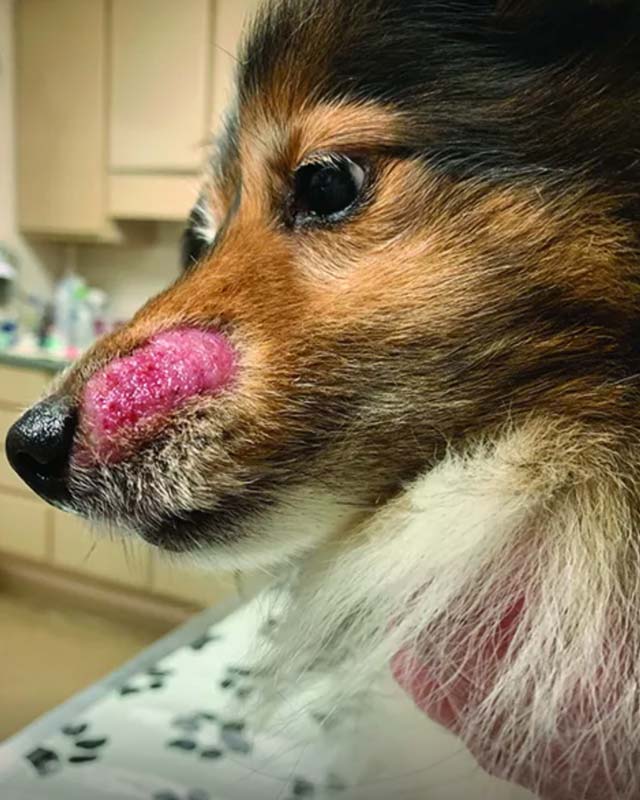
What Does Ringworm Look Like on a Dog?
Ringworm gets its name from its classical appearance in humans of a circular red rash with raised edges. In dogs, it can take on this form and a variety of other appearances, forming round or abstract bald patches with dandruff-like scales, scabs, and reddened or darkened skin. Hair within these patches tends to be dry and brittle.
Ringworm can occur on any part of a dog, but it tends to appear more prevalently on the snout, face, ears, forelegs, paws, underbelly, tail, and nail beds. Ringworm can appear in singular lesions or become generalized and affect the whole body.
Ringworm can be itchy, but not in every case. Some dogs are asymptomatic carriers of the fungus that show no outward symptoms but can still transmit the disease.
Photo: Ringworm lesion on dog's snout; via the Whole Dog Journal
Symptoms of Ringworm in Dogs
- Hair loss (alopecia) in round patches, sometimes with a red, raised, and crusty edge
- Scaly or crusty skin (seborrhea) with excessive dandruff
- Dry, lackluster hair patches with weak hair
- Patchy rash with inflamed, reddened, or darkened skin
- Inflamed nail beds or dry, darkened nails
- Dry, brittle nails
- Pruritus (itchiness) with scratching or excessive grooming
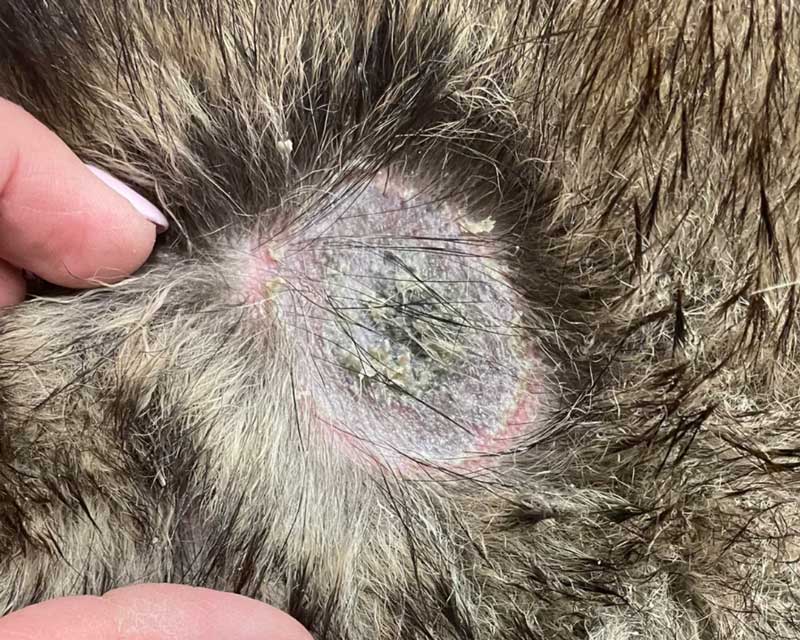
How Do Dogs Get Ringworm?
Dogs acquire ringworm via contact with the fungus, either on another animal (cat or dog) or contaminated objects, such as bedding, brushes, towels, food bowls, toys, and surfaces such as carpet, rugs, wool, and wood. The fungal spores are rather tough and can survive on many surfaces for up to 18 months. Ringworm can also be easily spread to humans.
Some forms of ringworm live in the soil, especially in warm and humid climates, and dogs can pick up the fungus from digging in the dirt. Because of the ease at which ringworm is transmitted, dog parks, shelters, and kennels are common locales for contracting it.
Dermatophytosis tends to affect puppies, senior dogs, and those with a weak or compromised immune system. Ringworm can also take advantage of existing skin conditions, wounds, scratches, flea bites, and broken or damaged skin and form an infection, with lesions appearing within 10-21 days after exposure.
Photo: Ringworm lesion on dog's back; via r/Illustrious-Tea-7227 on Reddit
Dog Breeds Prone to Ringworm Infections
-
Boston Terriers
-
Yorkshire Terriers
-
Jack Russell Terriers
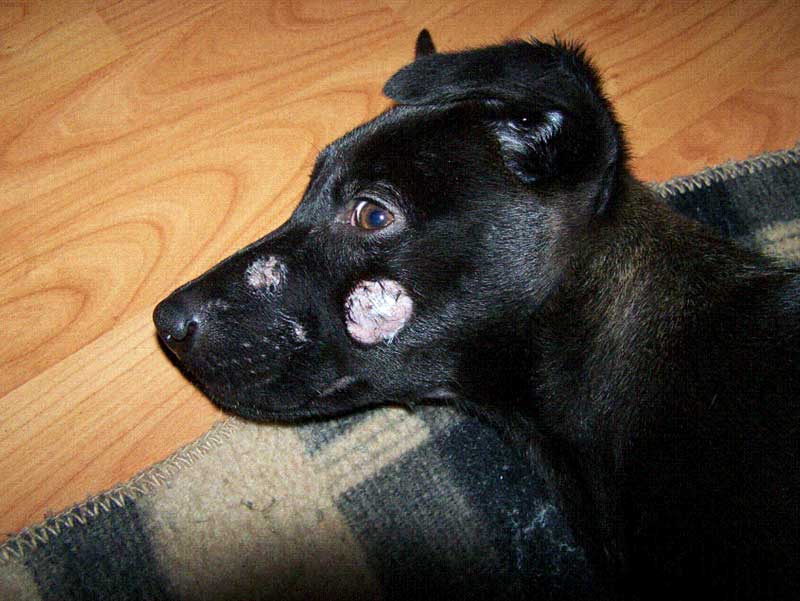
How Is Ringworm Diagnosed in Dogs?
Because ringworm can resemble other skin conditions, such as severe atopic dermatitis, demodex mange, or a yeast infection, a physical examination isn't enough to determine dermatophytosis as the cause. There isn't a single "gold standard" for identifying ringworm, but there are a combination of tools and methods to help.
Photo: Ringworm lesions on dog face; via Creedon's College
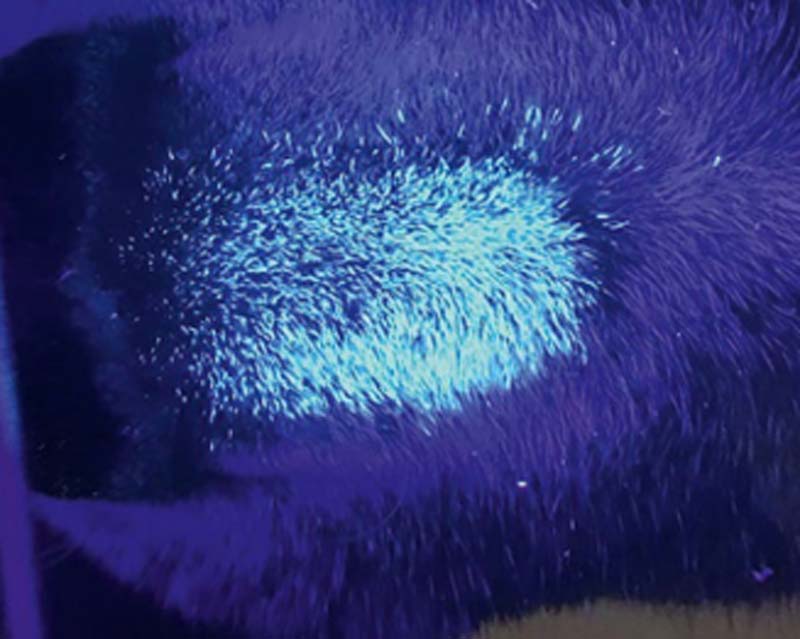
Wood's Lamp
A Wood's lamp is a "blacklight" device that uses ultraviolet light (UV) at a specific wavelength (320-400 nm) to identify skin diseases. When examining fur, the ringworm fungus Microsporum canis will glow a bright green color when seen under the lamp. This is caused by a chemical reaction generated by the fungus within the first 5 to 18 days of it attaching to hair follicles.
The Wood's lamp can also be used to monitor an animal's response to treatment. As an infection clears, less glowing green hairs will be seen.
However, other species of ringworm do not luminesce under a Wood's lamp, so a different method of identification is often used to pinpoint the culprit.
Photo: Luminescent hair under Wood's lamp; via the University of Florida
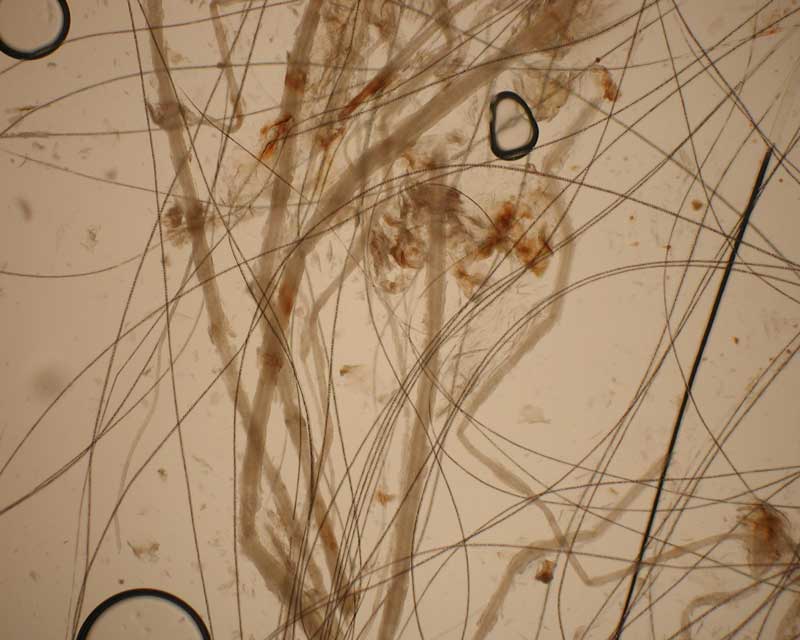
Microscopic Exam (Trichogram)
Another method for identifying ringworm is a direct microscopic exam of suspected hairs, also known as a trichogram. Hairs around a lesion are plucked, added to a drop of mineral oil, placed on a glass slide, and examined.
Normal, uninfected hairs will appear thin and black, while infected hairs will be much wider and a lighter brownish color due to the fungal spores covering the hair shafts. Using a combination of the Wood's lamp and trichogram tend to yield a very high success rate in diagnosing ringworm. Not only that, but because these exams get "same day" results, treatment can begin sooner.
Photo: Plucked hairs in mineral oil examined at 10x magnification under a microscope; via the University of Florida
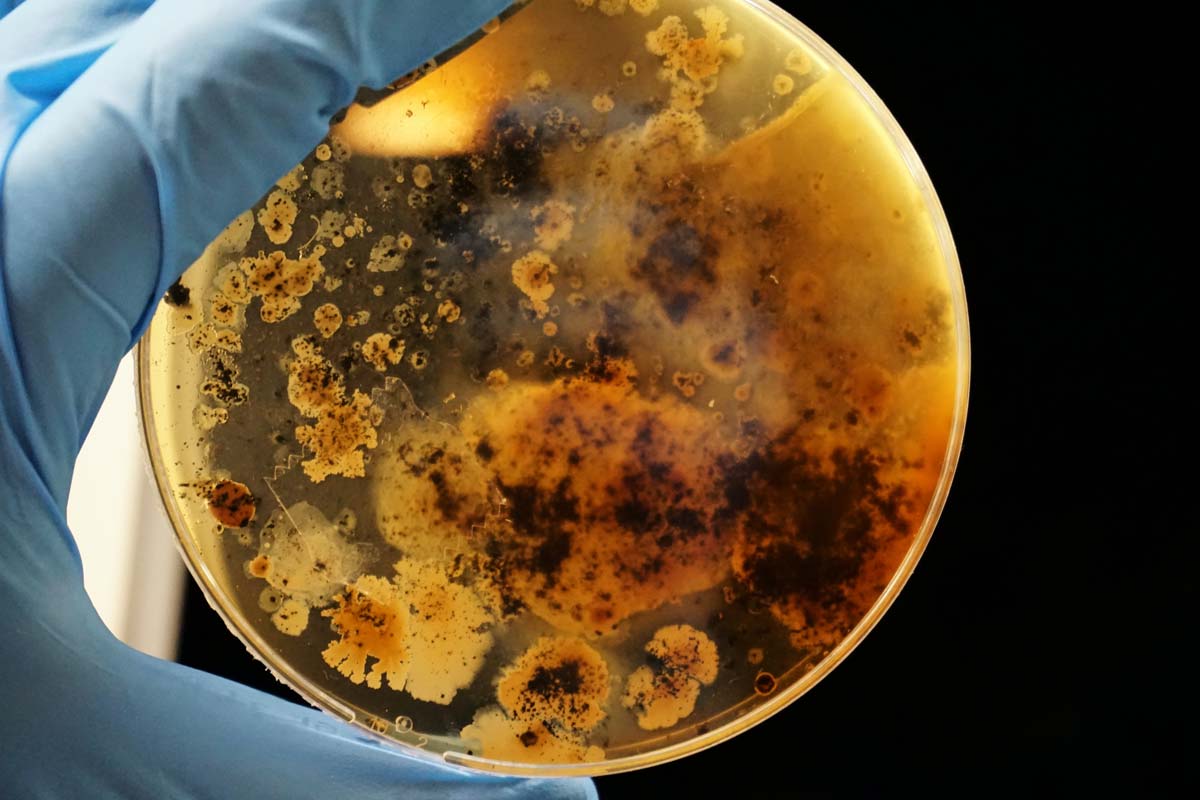
Fungal Culture
Fungal cultures remain one of the most accurate methods of identifying and diagnosing ringworm and other fungal infection. This involves sampling different lesions of a few hairs, scales, or scabs and placing them on culture plates (petri dishes) with a specific media (growth juice, if you will) called dermatophyte test media (DTM).
From there, the cultures are allowed to grow for a few days and analyzed under a microscope to look for dermatophytes. Positive signs can show within 3-5 days, but results can require 10-21 days. Though the accuracy of diagnosis with a fungal culture is higher, it calls for a longer wait.
Fungal cultures give the best view of monitoring the effectiveness of treatment and final "say" in when treatment is officially complete.
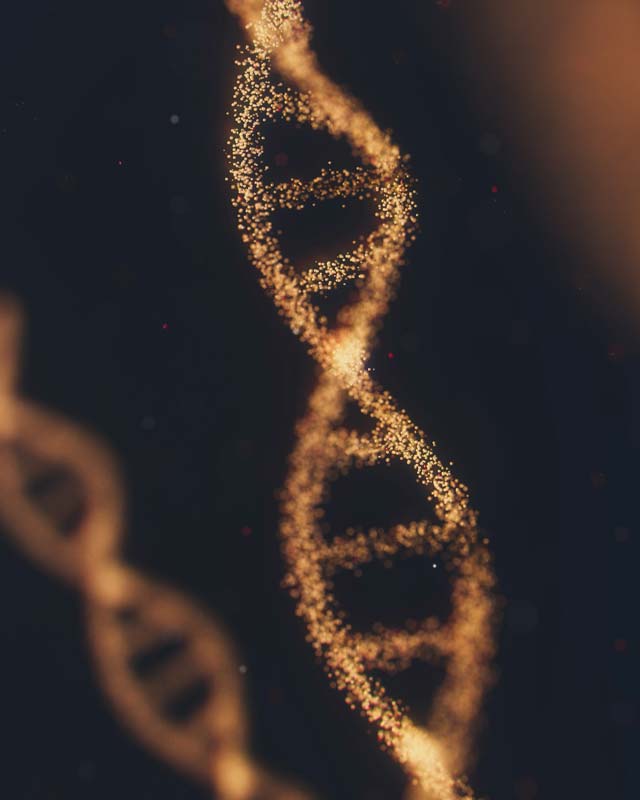
PCR: Polymerase Chain Reaction
Polymerase Chain Reaction (PCR) is a technique utilized in microbiology and biochemistry for rapidly producing copies of specific DNA sequences - often used to study certain characteristics of microorganisms. PCR finds much use in the world of diagnostics and is a newer way to diagnose ringworm in pets.
This test is done on hairs and hunts exclusively for fungal DNA, and it yields results faster than a culture - usually within 2-5 days. However, PCR cannot distinguish whether the DNA is from a living or dead ringworm fungus, so it is not best used to monitor response to treatment during a follow-up visit.
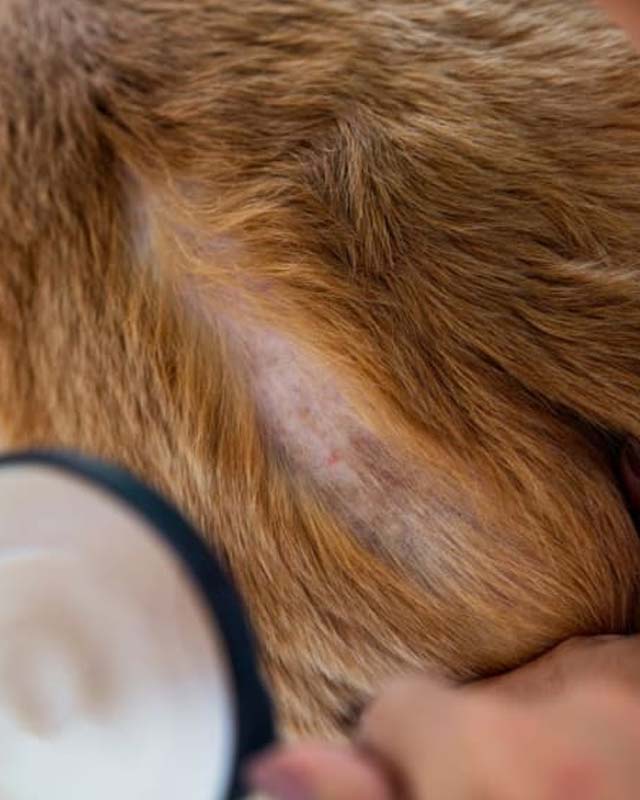
Treating Ringworm in Dogs
Ringworm can be very stubborn, but it is curable. It is most commonly treated with a combination of topical and systemic therapy, and ensuring that you follow your vet's instructions will be paramount.
Quarantine the Infected Dog
Ringworm is highly contagious - even to humans - so the infected dog will need to be separated from other pets and people. Unless absolutely necessary, it is not recommended that they are kept in a room with carpet or wood floors, as these will be very tough to decontaminate later.
The area you decide to keep them will need to be cleaned twice per week during treatment. When treating an infected dog, you will want to wear disposable gloves, and ensure you wash your hands and clothing after handling them.
Photo: Ringworm with alopecia on dog back next to tail; via Animal Hospital at Babcock Ranch
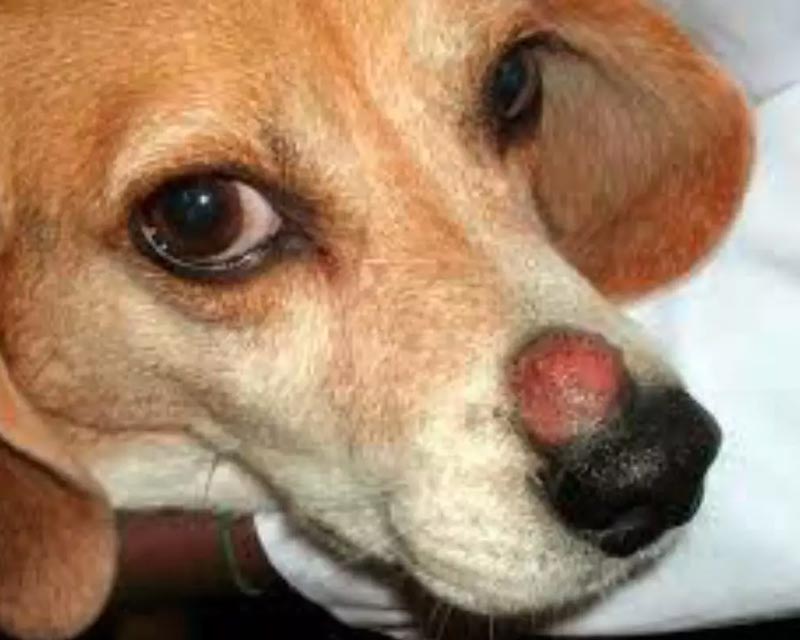
Topical Treatments for Ringworm
Two main types of topical treatments are used against ringworm: lime-sulfur dips and antifungal shampoos. Lime-sulfur dips tend to be more effective, and can be done at home or the vet clinic. However, because they are so pungent and messy, most people elect to do them at the clinic.
Bathing is crucial to get rid of the fungal spores on your dog's fur, as hairs that have been treated will not be infectious when shed. This aids in preventing any more environmental contamination of household surfaces and cross-contamination with other pets or people. Antifungal shampoos will typically need to be used twice per week until the infection clears.
In addition to the shampoos and dip, antifungal creams and ointments containing miconazole, terbinafine, or clotrimazole can be used for localized areas of skin. We do not currently have any research or customer anecdotal data to know for certain if Lavengel® has any effect on the fungus.
Photo: Ringworm lesion on nose; via Dog Health Guide
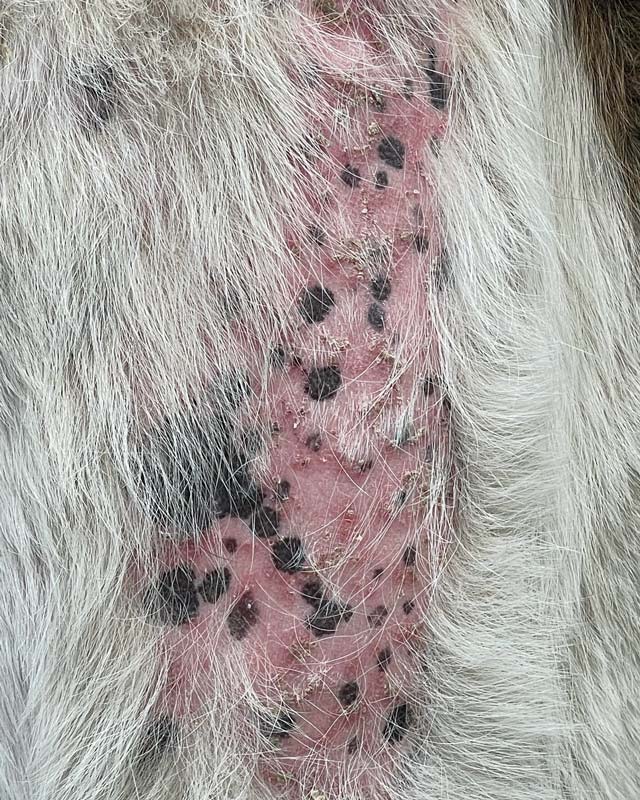
Oral Treatments for Ringworm
Oral prescription medications such as itraconazole or terbinafine are taken in order to make the fungus unable to reproduce and spread. These drugs, in conjunction with topical therapy, are usually required for a minimum of six weeks.
Prescription antifungals also come with different prices and potential side effects, most commonly gastrointestinal problems. It's very important not to stop treatment until the ringworm infection is completely cleared, or it may recur.
Photo: Large patch of missing fur with redness of skin on dog's back, possibly due to ringworm or demodectic mange, via r/Illustrious-Tea-7227 on Reddit
Decontaminating Your Dog's Environment
Infected hairs that your dog sheds contain thousands of live microscopic fungal spores that can remain intact on household surfaces for over a year, so again, it's best to keep your dog isolated during treatment. You will need to remove loose dog hair from floors, furniture, and upholstery by vacuuming or damp mopping daily.
From there, it's vital to disinfect all surfaces that your dog has touched or laid on - couches, rugs, bedding, crates, clothing, toys, etc. - until a fungal culture test comes back negative. Any contaminated bedding should be run twice through the washing machine in hot water, preferably with bleach. Some items may be easier to discard and replace than deep clean.
Note: Most non-bleach disinfectants do not kill the ringworm fungus. A disinfectant such as a dilute bleach (1:8 bleach-to-water ratio) solution or accelerated hydrogen peroxide can be utilized for sanitizing many surfaces. If you have carpeting or rugs, you will want to steam clean them. Wood floors will need to be mopped thoroughly.
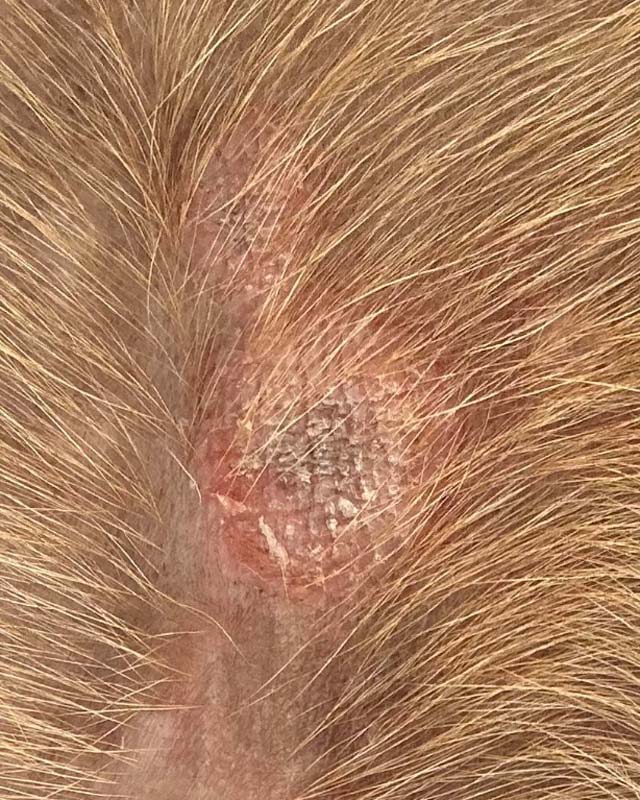
Ringworm Recovery, Prevention, and Post-Treatment
Treatment should not be stopped until two consecutive fungal cultures come back clear, and can last anywhere from a few weeks to a few months. Cultures should be taken every 2-3 weeks after treatment begins.
Remember, ringworm is easily spread between animals and humans. You can pass ringworm to your dog and other pets.
If one dog tests positive, it's good to have other pets tested as well. Keep in mind that some animals can carry the fungus without showing any signs of infection. If you are adopting a new pet, or taking in a stray, it's a good idea to keep them isolated from other pets until they've had a detailed medical evaluation.
Pets that have healthy skin are less susceptible to ringworm, which is predominantly achieved with a healthy diet and regular grooming. Supplementing omega-3 fatty acids into their diet can help maintain good skin and coat. Finally, don't neglect regular checkups with your veterinarian.
Photo: Ringworm lesion on dog's belly, via r/PFChangsOfficial on Reddit
Ringworm FAQs
Can any dog get ringworm?
Yes, any dog breed can get ringworm.
Puppies, senior dogs, and those with compromised immune systems or chronic skin disorders are more susceptible than dogs with healthy skin.
Of all canines, terrier breeds such as Boston terriers, Yorkies, and Russell terriers are more prone to ringworm infections.
Is ringworm itchy for dogs?
Ringworm can be itchy, but it is not in every case.
Dogs may attempt to persistently groom (lick) the lesions, which can lead to or worsen irritation.
Though uncommon, certain dogs can be carriers of ringworm and show no clinical signs, such as fur loss or itching.
Can I get ringworm from my dog?
Yes, ringworm is a highly contagious, zoonotic disease - meaning it can be spread to humans from animals.
The inverse is also true. Humans can easily spread ringworm to dogs, cats, livestock, and other animals.
Ringworm typically appears in humans as a round, red welt with raised edges. Google Images can certainly give you more visual info.
How long does treatment last for ringworm?
The length of treatment for ringworm can last anywhere from a few weeks to several months, depending on the level of infestation, your dog's immune system, and how carefully treatment procedure is followed.
Two consecutive negative fungal cultures are needed to indicate the infection is clear.
Simply put, do not stop treatment unless your veterinarian says so, and follow their guidelines.
Neglecting to follow through on topical and oral treatments, OR, failing to properly decontaminate your dog's environment could result in the infection lingering for months or recurring later.
Can my dog's ringworm go away on its own?
It is possible, yes.
Ringworm is considered a "self-limiting" disease that resolves on its own in healthy dogs. If your dog has a healthy immune system, it is possible for them to self-cure in 2-3 months. However, there is no guarantee of this, and it may take much longer.
Allowing ringworm to "work itself out" runs the risk of spreading to other dogs, animals, or people. Treatment speeds up the healing process and reduces the contagion and its opportunity of spreading.
What's the difference between ringworm and mange?
Ringworm and demodectic mange can sometimes be confused because they both tend to exhibit spreading patches of hair loss (alopecia), especially around the face. Both diseases feed on hair follicles and can exhibit mild itching or none at all.
Some of the key differences between ringworm and demodectic mange:
- Ringworm is a fungus; mange is caused by parasitic mites
- Ringworm is extremely contagious to humans and other animal species, whereas demodectic mange is not
- Ringworm can affect any dog; demodex mange tends to only affect dogs with weak or compromised immune systems
- Ringworm will cause hair follicles to glow bright green under a Wood's lamp; mange will not
- While both involve skin and hair cytology in diagnosing, ringworm requires a fungal culture to properly diagnose and monitor treatment progress
How long will my dog be contagious with ringworm?
If the ringworm is treated immediately and aggressively, infected dogs will stay contagious for about 3 weeks.
If only minimal measures are taken or if you do not follow the prescribed approach, the infection and the contagious period will last much longer.
Finally, if you do not properly decontaminate your dog's environment - carpet, floors, couches, bedding, food bowls, toys, etc. - you run the risk of the fungus sticking around and re-infecting your dog.
Should I shave or groom a dog with ringworm?
If your dog has defined bald spots, shaving the hair around them can help keep the fungus from spreading across the body. An electric trimmer would work best.
Brushing the hair once a day can also help remove spores.
Be sure to disinfect the trimmer and any brush after each use with a dilute bleach solution (1:8 bleach to water ratio).
Be aware that the spores are active, even on loose hair and surfaces they come in contact with, so dispose of the hair accordingly.
However, shaving dogs with very long coats is not recommended. This can cause small cuts or scratches to the skin, making the dog more susceptible to the ringworm infection or contracting a separate bacterial infection (or pyoderma).
What disinfectants remove ringworm fungus from surfaces?
A diluted bleach solution (10-12% bleach, 88-90% water, or 1 pint bleach to 1 gallon of water) is likely the most cost effective means of disinfecting many household surfaces.
Another fungicide that is readily available to consumers is Accelerated Hydrogen Peroxide (AHP). Virox, Clorox, and Rescue are a few brands that sell it. First developed by Virox, you can learn more about this powerful, eco-friendly cleaner on their AHP technology page.
For more on the science behind disinfectants versus ringworm, see this article about Kennel Disinfectants for Dermatophytes (Ringworm).
More Common Canine Skin Problems
-
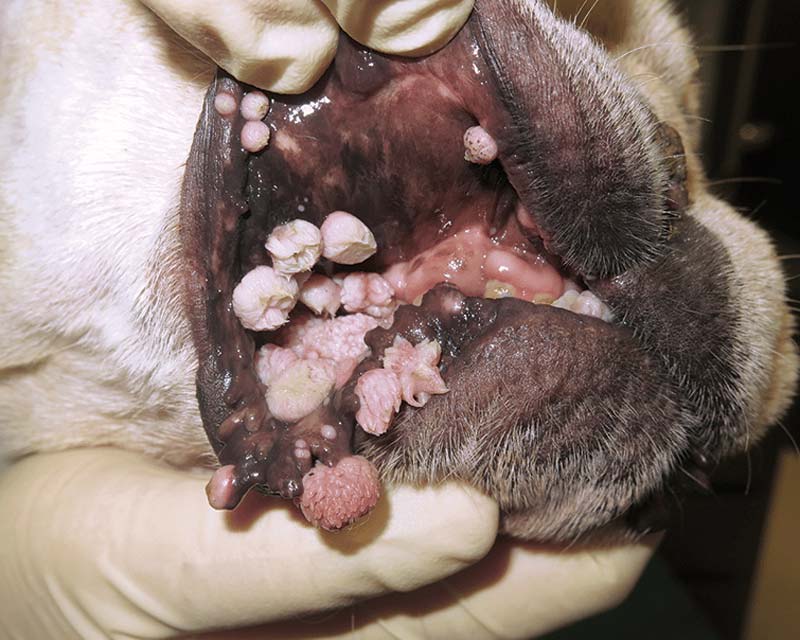
Warts
Welcome to DogwartsWarts are benign growths caused by the canine papilloma virus (CPV) that can occur nearly anywhere, including inside the mouth!
-

Mange
Mite be worth looking intoMange is a parasitic disease that comes in two types: demodectic and sarcoptic. Each type is caused by a different species of mite.
-

Yeast Infections
This yeast can be a beastYeast infections are caused by an overgrowth of a fungus called Malassezia pachydermatitis. They can affect the skin, ears, nails, and paws.
Collapsible content
Resources on ringworm
- University of Florida: Ringworm Diagnosis
- Dog Health Guide: Ringworm in Dogs
- Clinician's Brief: Ringworm: Recognition and Client Education
- VCA Animal Hospitals: Ringworm in Dogs
- American Kennel Club: Ringworm in Dogs: Signs, Symptoms, Treatment
- Merck Veterinary Manual: Ringworm (Dermatophytosis) in Dogs
- PetMD: Ringworm in Dogs
- Ohio State University + AKC Canine Health Foundation: Dermatophytosis


